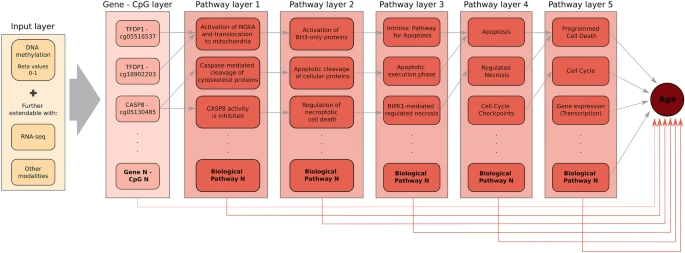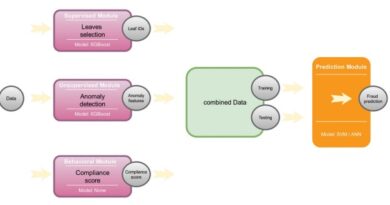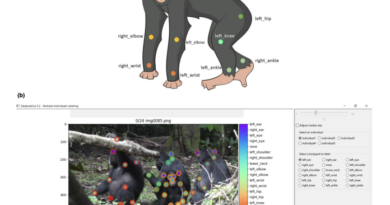Predicting Biological Age and Understanding Epigenetic Mechanisms: A Breakthrough in AI Research
As our understanding of aging continues to evolve, scientists and researchers are constantly seeking new ways to accurately predict biological age and gain insights into the underlying mechanisms that drive the aging process. Recent advancements in artificial intelligence (AI) have opened up exciting possibilities in this field. In this article, we will explore a groundbreaking deep neural network called XAI-AGE, which has shown promising results in biological age prediction and provides valuable insights into epigenetic mechanisms.
The Importance of Predicting Biological Age
Aging is a complex process that involves the gradual accumulation of damage and is a significant risk factor for chronic diseases. Epigenetic mechanisms, particularly DNA methylation, play a crucial role in aging, although the specific biological processes are still not fully understood. Accurate prediction of biological age can provide valuable insights into an individual’s health status and help in understanding the mechanisms underlying aging.
🔥Explore 3500+ AI Tools and 2000+ GPTs at AI Toolhouse
Epigenetic Clocks and Biological Age Prediction
Epigenetic clocks have emerged as a powerful tool for estimating biological age based on DNA methylation patterns. These clocks utilize supervised machine learning algorithms and combinations of CpG sites to estimate chronological age. However, the underlying algorithms and key aging processes of epigenetic clocks still require further investigation.
The Need for Explainable AI in Age Prediction
While neural network-based methods have shown high accuracy in predicting biological age, their lack of interpretability has been a significant limitation. Explainable AI (XAI) models aim to address this limitation by providing insights into the predictions made by deep learning models. This is particularly crucial in the context of aging research, where understanding the underlying mechanisms is of great importance.
Introducing XAI-AGE: A Groundbreaking Deep Neural Network
Researchers have recently proposed a deep learning prediction model called XAI-AGE (XAI stands for Explainable AI). This model integrates previously identified biologically hierarchical information into a neural network for predicting biological age based on DNA methylation data. XAI-AGE aligns with the hierarchy of biological pathways, making it interpretable and relevant to the underlying epigenetic mechanisms.
How XAI-AGE Works
The XAI-AGE model consists of multiple layers, with each layer corresponding to distinct levels of biological abstraction from ReactomeDB. DNA methylation beta values serve as the input, and information propagates through the network, connecting nodes based on shared annotations in ReactomeDB. The model predicts chronological age by calculating the arithmetic mean of outputs from individual layers, reflecting the hierarchical nature of biological pathways.
Advantages of XAI-AGE
XAI-AGE has shown remarkable performance in accurately predicting biological age from DNA methylation data. It has surpassed first-generation predictors and matched deep learning models while providing enhanced interpretability. XAI-AGE excels in whole blood and blood PBMC tissue types but may perform less accurately in other tissues.
The Promise of XAI-AGE: Insights into Epigenetic Mechanisms
One of the most significant advantages of XAI-AGE is its ability to provide insights into epigenetic mechanisms connected to aging. By examining the importance of scores of individual neurons in predicting age, researchers can visualize and understand the underlying mechanisms. XAI-AGE allows for the evaluation of the importance of CpGs, genes, biological pathways, or entire pathway branches and layers in predicting age across the human lifespan.
Conclusion
The development of XAI-AGE has brought us closer to accurate biological age prediction and a deeper understanding of the epigenetic mechanisms involved in aging. By integrating biologically hierarchical information into a deep neural network, XAI-AGE provides both high prediction precision and interpretability. This breakthrough in AI research has the potential to revolutionize aging studies and contribute to advancements in healthcare and disease prevention.
With further research and refinement, XAI-AGE could pave the way for personalized interventions to slow down the aging process, promote healthy aging, and potentially prevent age-related diseases. As AI continues to evolve, we can expect more exciting developments in the field of aging research. The journey towards understanding the intricacies of aging and unlocking its secrets has just begun, and XAI-AGE is leading the way.
Check out the Paper. All credit for this research goes to the researchers of this project. Also, don’t forget to follow us on LinkedIn. Do join our active AI community on Discord.
If you like our work, you will love our Newsletter 📰





Thanks for sharing. I read many of your blog posts, cool, your blog is very good.